‘Being tough is doing whatever it takes to keep moving’ - 51 weeks after losing his leg, one rider returned to finish the race that wasn’t
When wildfires cancelled Mid South, Jacob Keen charted his own course—and found something bigger than a finish line.


Jacob Keen clipped into his pedals late one March morning, under a sky scrubbed clean by a sudden shift in the wind. The day before, smoke from more than 130 wildfires had turned the Oklahoma plains into a war zone—flames on both sides of the road and gusts strong enough to fell trees. But now the fields stretched quietly and golden before him in the morning light, the smell of smoke still clinging to the air of Stillwater. Officially, the Mid South gravel race was cancelled. Roads had been closed. Evacuations ordered. But Keen had weathered worse.
Keen was there for nothing but the promise he’d made to himself, and his friend’s belief that if you speak it, picture it, and put in the work, the universe might just meet you halfway.
One year earlier, nearly to the day, he had been commuting to work in New York City when a truck sideswiped him, costing him his lower right leg and his job.
Before the accident, Keen, 28, worked as a gaffer in the film industry, hauling lighting gear across sets. It was work he loved, but returning to it felt nearly impossible. Yet, somehow, he would.
When we spoke over a video call, Keen was living out of an Oklahoma Airbnb, on location for a new show. He was back in the work that had once defined him. But long days on set, the strain of moving with a prosthetic, and a growing awareness of his physical limits had begun to shift his perspective. For a while, he almost lost the identity he’d built – on set and off. A lifelong bike rider, Keen had been a former bike messenger, a proud Mid South finisher, the kind of guy who could ride fixed-gear all day and still grin and pop tricks at the end of it.
“I remember thinking, if I ever get back to Mid South, it means I made it back to life,” he says.
And so, he returned to the Sooner State, chasing that version of himself. But nature threw a 170,000-acre-sized curveball.
The latest race content, interviews, features, reviews and expert buying guides, direct to your inbox!
The 2025 edition of Mid South saw no fanfare, no cowbells, no muddy finish line hugs. Hurricane-force winds had spread fires across Payne County. Homes were burning. Entire neighbourhoods were evacuated. And some 170,000 acres would be lost that weekend. Race organiser Bobby Wintle and his team were forced to make a late-night decision to cancel the beloved event and send the riders home as soon as it was safe for them to do so.
“We were in the middle of chaos—deep, deep chaos,” Wintle recalls. “And we were trying our best to hold on to hope that the winds would change”
But when the city confirmed there would be no support for closures or safety operations, and the full scale of the wildfires became clear, the choice was no longer optional.
“It was the easiest, hardest decision of our entire lives… I’m just incredibly thankful it didn’t happen on Saturday with 4,000 riders on course. Parts of the course were literally on fire on both sides of the road at the same time.”
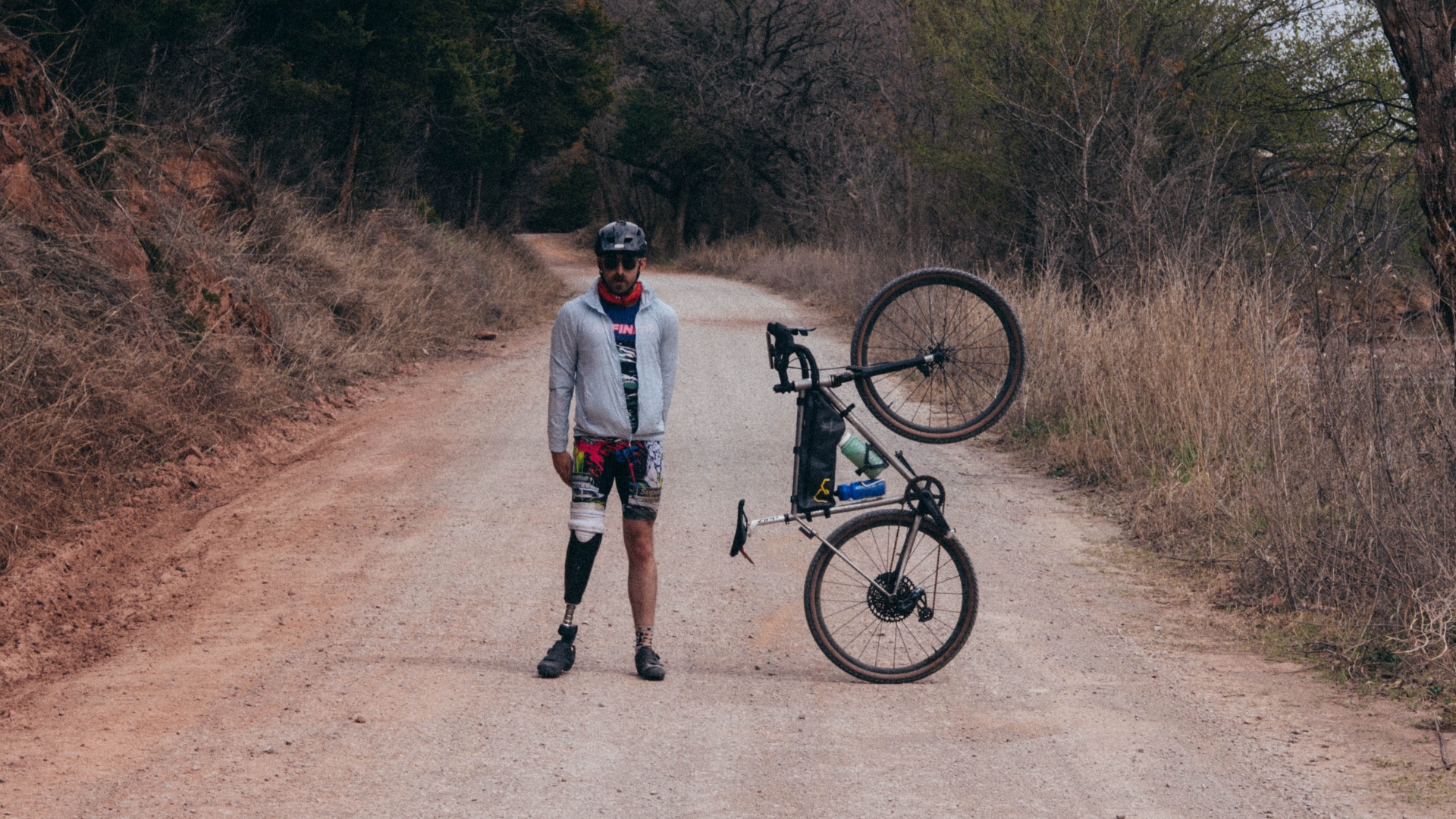
At first, Keen saw no choice but to head home. But the thought of leaving without even trying to fulfil his quest felt like something he’d regret.
That Friday, Keen and his friends opened their AirBnB to anyone in need—a small act of generosity amid the chaos.
“We asked our host, and they were kind enough to let us have people over,” he says. “I think five folks we’d never met before stayed with us. It just felt like the right thing to do. We were lucky; we had a roof.”
Instead of disappointment, many found something else: a chance to ride, to connect, to be present. The winds had calmed overnight. Smoke still lingered, but the skies were clear and the air was safe. And with most of the official course shut down, locals shared backroads and quiet loops—routes that wouldn’t interfere with recovery efforts but still offered a sense of purpose and place.
In the wake of it all, as informal rides began to take shape, his friends mapped out long, punishing routes. But Keen chose something quieter, deciding to ride the course in reverse with the hopes of crossing paths with friends riding out and back. That way, he figured, he wouldn’t feel so alone out there.
He set off. His steel bike loaded with snacks, tubes and tools. There would be no feed zones. No timing mats. Just the steady thud of his prosthetic against the pedal stroke, like a drumbeat.
Smoke still hung in places and he had to pull a bandana over his face just to breathe.
He told friends he’d probably ride 20 miles and call it. But once he got moving, it was hard to stop. He rode out, saw familiar faces and kept going – to the next town, the next turn, the next horizon.
Then came the headwinds—17 miles per hour, unrelenting for nearly 40 miles. At one point, bonking and out of food, he pulled into a gas station and texted his friends to come get him.
“I was cooked,” he says. But as he waited and he devoured whatever he could grab from the shelves, something shifted. A little food, a cold soda, a bite of fried chicken, and suddenly, he felt alive again.
When his friend Alex T. Barratt and others arrived, with reinforcements of snacks and a box of wine hanging from the window, doubt crept in. He was feeling better, but not convinced he could go on. Then Barratt got his bike out of the car, clipped in, and started pedalling.
“He was like, ‘Well, it’s this way back to town if you want to come’,” Keen recalls. “I told him I was done. He just looked at me and said, ‘What else are we gonna do today?’ And I thought—yeah, you’re right.”
So he got back on the bike.
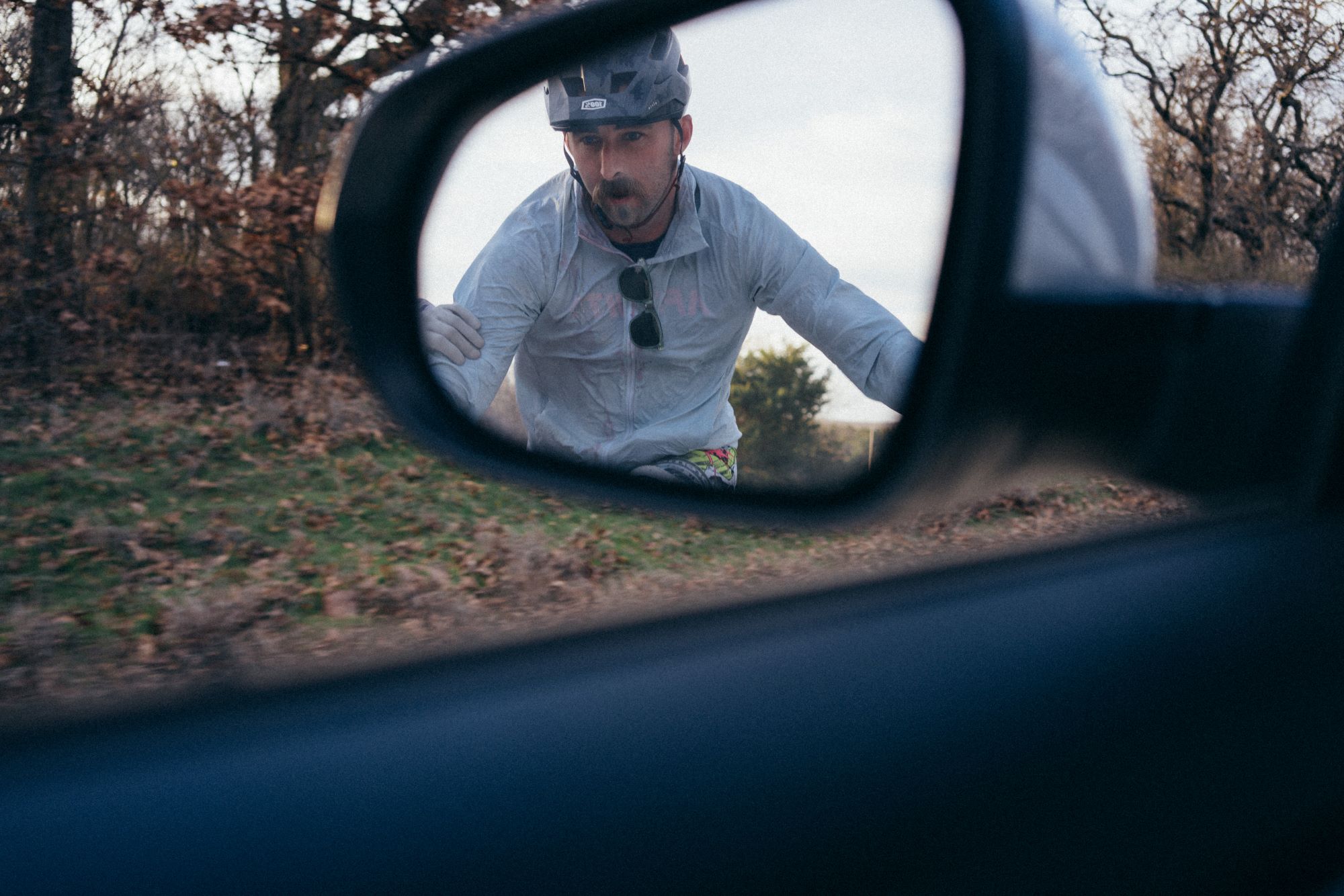
Keen’s first Mid South had been a gritty but joyful ordeal. In 2024, he had raced it fixed-gear, leaning into the chaos of mud, rain and dust that defined the event. No brakes, no gears, just pure stubbornness. He even wheelied for a good chunk of it.
“Jacob is a legend in the Oklahoma City cycling community,” says Wintle. “He’s so talented, so humble, and so nice. He’s got swag and style, and he’s so cool… That photo of him kissing his front tire at the finish line—fixed gear, mid-wheelie—it was like, this dude is the shit.”
A post shared by Jacob Keen (@crop.t0p)
A photo posted by on
This time around, things were different. He rode a geared steel gravel bike fitted with knobby tires and a frame bag stuffed with essentials. Gears weren’t just about efficiency—they were a necessity. Having lost the ability to stand and grind up climbs, Keen had to spin. His weight distribution was different now, too, and pushing too hard risked tweaking the prosthetic or his hip.
He’d also grown hyper-vigilant about hygiene. Any grit or chafing inside the prosthetic’s socket could turn into hours of pain. He cleaned the liner religiously, carried wipes and an extra sock. “Little stuff becomes big problems quickly,” he says.
He used to think riding fixed was about being tough. Now, he says, “being tough is doing whatever it takes to keep moving.”
That version of himself—young, scrappy, invincible—felt far away when he woke up in a hospital bed later that year, staring at the ceiling, wondering if he’d ever walk, let alone ride, again.
Recovery was ugly.
Phantom pains. Breakups. Setbacks. Even after the amputation, doctors had to remove more. “That part hit hard,” Barratt recalls. “It was already tough seeing him lose part of his leg, but then they had to take even more. I just remember thinking, man, let this be enough already.”
So Keen kept his goals small. Get out of bed. Take a step. Pedal a few feet on a trainer.
Luckily, he wasn’t entirely on his own. Keen’s stepmom is a physical therapist, and he was able to move into her accessible home in Texas for early rehab. And not long after the crash, Meg Fisher—an Olympic medalist and respected para-athlete—reached out. She offered guidance, encouragement, and practical advice on everything from prosthetic fit to staying mentally strong.
“She was one of the only people I talked to about limb loss,” he says. “She just got it.”
“I didn’t want to think about being an amputee. I didn’t want to go to support groups. I didn’t want to be labelled a para-cyclist. I just wanted to be Jacob.”
But over time, that changed. A friend introduced him to a group of amputee athletes. No speeches, no therapy circles—just people getting back to life.
“Seeing other people out there, doing their thing—it flipped a switch in me,” Keen says. “It made me realise it’s not about being ‘normal’ again. It’s about building a new normal.”
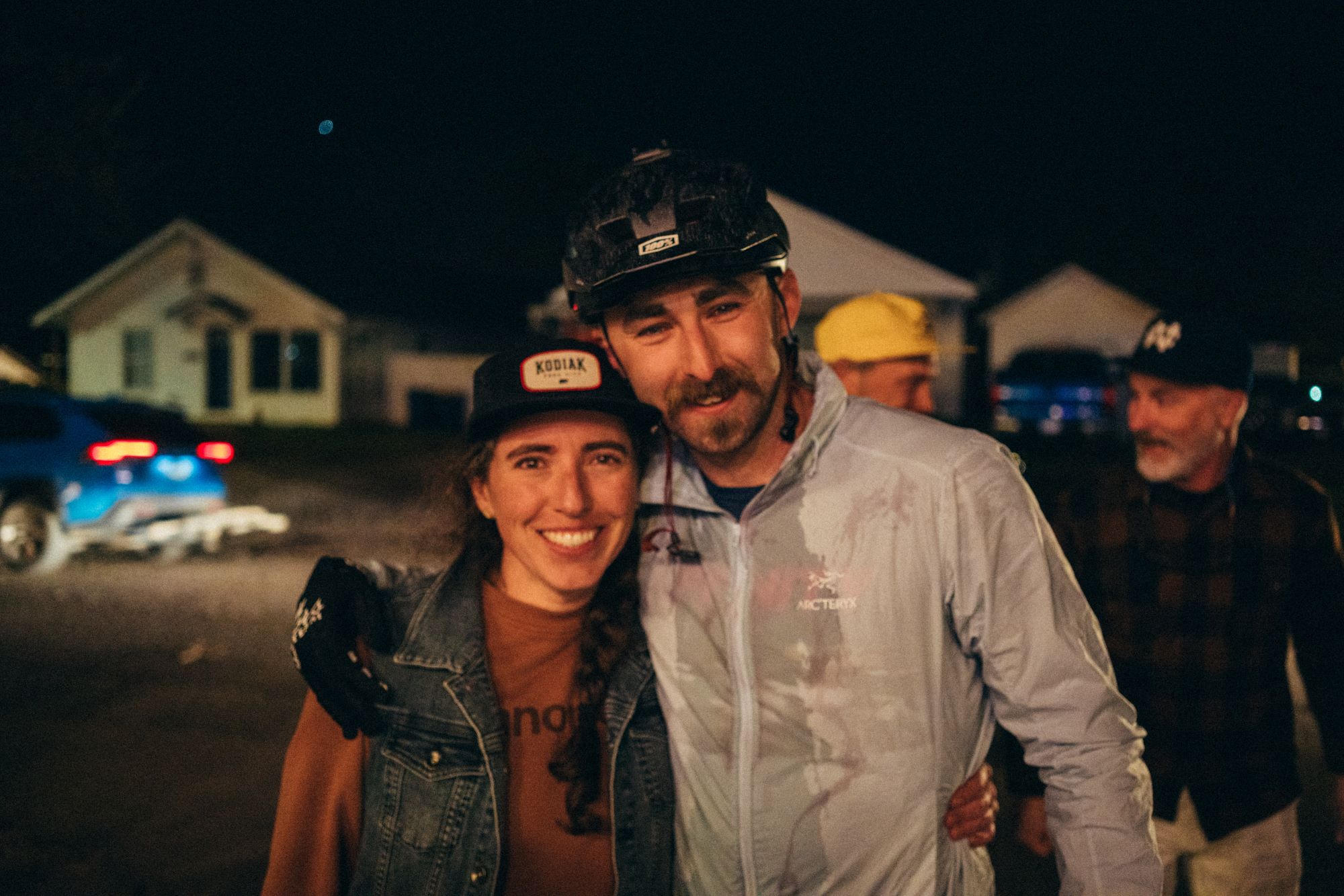
Jacob Keen with Meg Fisher
As the sun dipped low, Keen and Barratt kept pushing along on their own 2025 Mid South adventure. Their path lit only by the headlights of the support car trailing behind. The ride had gone longer than expected, and with each mile, the streets grew quieter. When they finally rolled into Stillwater, it didn’t feel like a finish. The town was still. The finish line arch was up, but no one was there to welcome them in. Just wind and dust. Jacob looked around, his body aching, his socket rubbed raw. He tried to feel proud, but mostly, he felt hollow.
Then someone suggested heading to the brewery. Maybe there’d be a few people there.
Keen and Barratt rolled slowly toward Stonecloud Brewing, and just as they rounded the corner, they heard something.
Cheering.
Lights. Flashlights. Voices shouting Jacob’s name.
Friends and strangers had gathered—coordinated quietly by his friends, who’d messaged Wintle and Fisher behind the scenes. Dozens of people were waiting. Others ran alongside them. And Keen, riding side-by-side with Barratt, started to cry.
Maybe his friend was right. Maybe if you ride hard enough, dream loud enough, and let people love you anyway, something extraordinary might still be waiting at the end.
“That Bobby hug made it all worth it,” Keen says, voice catching. “I shed a tear at sunrise, and I shed the rest of them at sunset…The cycling community is what got me through this. The people who never treated me differently, but also knew when to lend a hand without making it a big deal.”
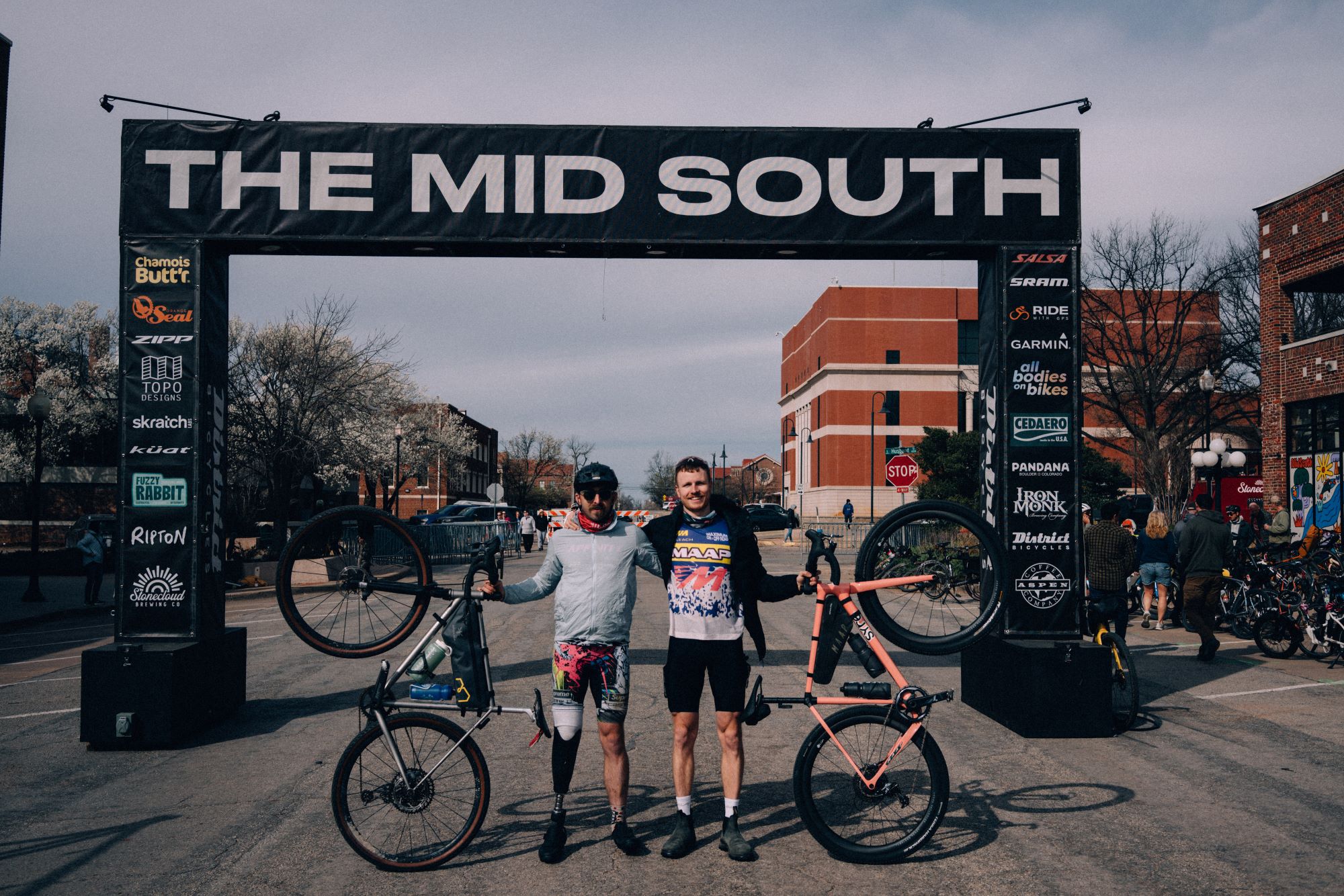
Keen and his friend Alex T. Barratt
On that smoke-hazed March evening, when the last flickers of fire smouldered on the plains, Jacob Keen stood on an empty Stillwater street. Dirty. Exhausted. Whole.
Turns out, “you don’t always need a finish line to finish something that matters.”
At Mid South, the tradition of celebrating the DFL (dead f*cking last) is just as sacred as the winner’s champagne. Wintle always made it clear: the final rider across the line is the beating heart of the race. This time, that spirit converged around Jacob Keen. Not because he was last, but because finishing on his own terms somehow brought the race back to life in the process.
“Everyone has something to learn from Jacob,” Wintle says. “He shows that you are capable, that you are beautiful, and that no matter what you look like or where you’re from or what’s happened to you, you’re worthy of love—and of doing the things you set your mind to. He embodies that. That’s the heart and soul of Mid South—from the inside out.”
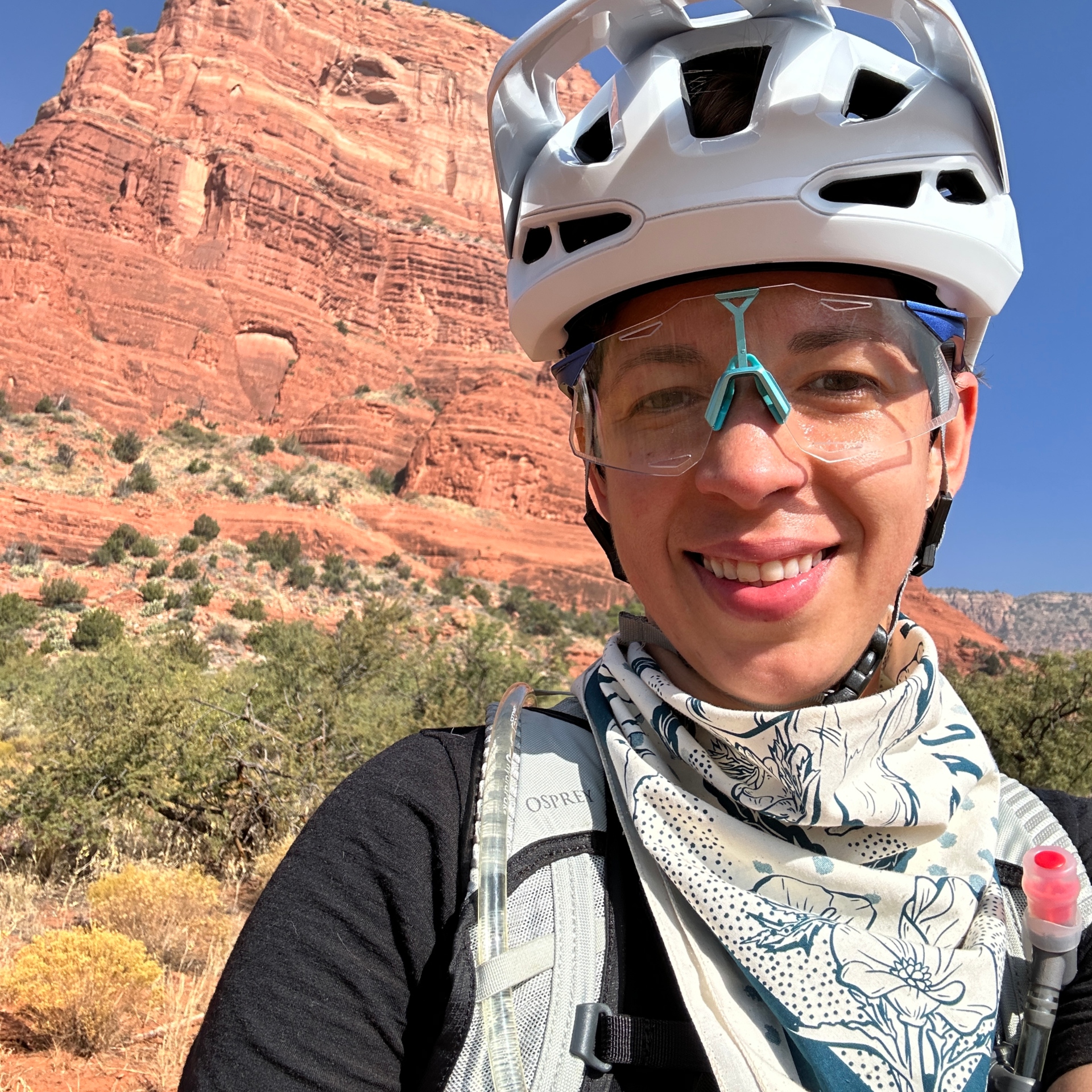
Rosael Torres-Davis is a cycling journalist who writes about the sport’s defining figures and overlooked stories. Their work blends reporting, storytelling, and cultural insight to capture what makes cycling matter both in competition and beyond.
You must confirm your public display name before commenting
Please logout and then login again, you will then be prompted to enter your display name.